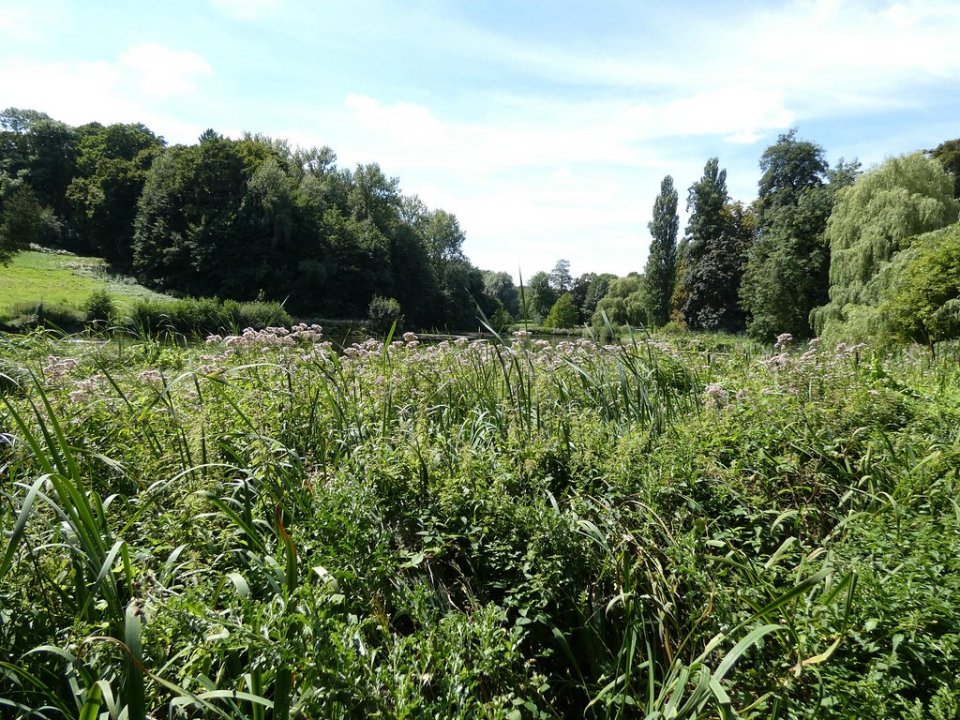
Biogeographic region: European Atlantic mixed forests
Surface area: ca. 5 km2
Country: Belgium
Region/Province: Brussels Capital Region
"Reinforcement Réseau écologique bruxellois" (REB - EN: Enhancing Brussels Ecological Network) is a project aiming to reconnect green spaces and develop biodiversity, nature and the quality of life in the city. The project is led by the regional agency for the environment, working with public actors, associations and citizens in five neighbourhoods, representing Brussels urban diversity, to develop local strategies to enhance the regional ecological connectivity (i.e. green network - maillage vert). In each of the neighbourhoods, a diagnostic study will be carried out, in consultation with local stakeholders, in order to define objectives, projects and carry out innovative developments with an ecological vocation. The local strategies will lead to the development of concrete projects and will offer lessons and inspiration to neighbourhoods with similar characteristics.
The project aims to reconnect green spaces, develop biodiversity and enhance the quality of life in the city. Further objectives include improving the environment for pollination and climate regulation.
Educational services aim at enhancing the ecological awareness of citizens. Another goal is to foster local cohesion by providing a public available urban green space with enhanced biodiversity that allows for social encounters.
PRINCIPLE UF-NbS (Urban Forests as Nature-Based Solutions) ACTION(S)
Numerous priority actions are foreseen, depending on the neighbourhood typology, and namely:
In 'Closed and dense neighbourhoods'
- Develop intensive green roofs and green facades
- Accommodate wildlife at the building level
- Plant trees along streets, privilege diversification, and protect and vegetalise tree stand
- Re value brownfield in terms of biodiversity; vegetalise squares, roundabouts, berms, school yards
- Create new greenspaces and playground promoting contact with nature
- Diversify plantations to bring about colours and odours the whole year long
In (semi)closed neighbourhood
- Develop private gardens
- Develop small new 'local parcs' within the building blocks, where possible
- Plant trees along streets, privilege diversification, and protect and vegetalise tree stand
- Re value brownfield in terms of biodiversity; vegetalise squares, roundabouts, berms, school yards
- Develop intensive green roofs and green facades, to connect inside and outside building block
Suburban & residential areas
- Develop setback areas, gardens, and connections between gardens to accommodate biodiversity
- Vegetalise squares, roundabouts, berms, parking lots, sidewalks
Apartment blocks
- Develop setback areas, gardens, and connections between gardens to accommodate biodiversity
- Vegetalise squares, roundabouts, berms, parking lots, sidewalk
OTHER PRINCIPLE NbS ACTION(S) – non-UF
- Practices of participatory urban planning regarding both the public space and private gardens
- Develop areas for bathing
- Re-think public lighting to enhance biodiversity
- Increase Biodiversity
- Enhancing sustainable urbanisation
- Increase accessibility to green open spaces
- Increase awareness of NBS solution & their effectiveness and co benefits
- Increase social interaction
- Increase well-being
- Social learning about location & importance of NBS
- Importance of creating local stakeholder group (local municipalities, citizens, association)
- Importance of including the urban context in the development process
- Importance of mapping and inventorying the green objects on different thematic (size, owner, location in the Brussels ecological network…)
- Importance of regional centralization for piloting and consistency
- No achievement without communication work and close follow-up
City, regional general funds:
Regional funds: 165.000 € for the prospecting, communication and project designing.
Regional and communal funds (amount to be defined) for the landscaping works.
Private sector investment:
The private sector investment will depend on the local projects and in the interest of local stakeholders to join in. So far only the public stakeholders (municipalities) are involved in the local projects.
- Tree alley
- Street trees
- Urban green infrastructure
- Urban park
- Public garden
- Pocket park
Fabien Genart
Project Coordinator
Géographe, Bruxelles Environnement, Division Espaces verts
Tel: +32 2 5634227
e-mail: fgenart@environnement.brussels
Further information
The compilation of this case study description has been funded by the Horizon 2020 CLEARING HOUSE project. This project has received funding from the European Union’s Horizon 2020 research and innovation programme under grant agreement No 821242.
- 3. Good Health and Well-being
- 11. Sustainable Cities and Communities
- 15. Life On Land
